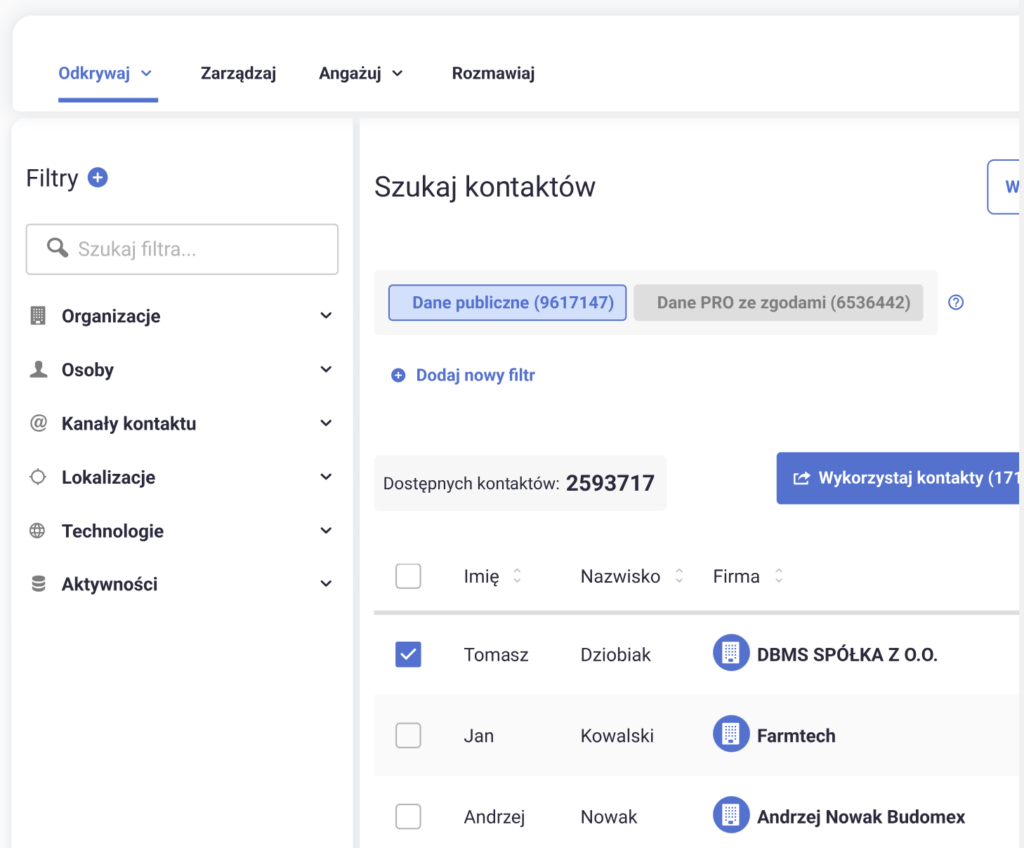
Electronic Communications Law and B2B Prospecting in Poland
Changes in the Electronic Communications Law (ECL), effective in Poland from November ...

Ever feel like finding the perfect supplier is like searching for a needle in a haystack, but the haystack is on fire and you’re blindfolded? Well, you’re not alone! Navigating the labyrinth of Polish suppliers and manufacturers can be daunting, but with the right sales intelligence systems like dmsales.com, It doesn’t have to be difficult In this guide, we’ll dive into the essential features you need in a sales intelligence system, show you how to set it up for pinpoint accuracy, and teach you how to sift through supplier data like a pro. Plus, we’ll cover how to build and maintain those crucial supplier relationships and leverage sales intelligence for long-term success. Ready to turn that haystack into a treasure trove? Let’s get started!
When diving into the world of sales intelligence systems to find Polish suppliers or manufacturers, you need to know what features to look for. First off, data accuracy is non-negotiable. If the data isn’t accurate, you’re wasting your time. Look for systems that offer real-time updates. This ensures you’re always working with the most current information, which is crucial in making informed decisions. Another key feature is a user-friendly interface. You don’t want to spend hours trying to figure out how to use the system. A good sales intelligence system should be intuitive and easy to navigate. Additionally, customizable search filters are a must. These allow you to narrow down your search to find exactly what you’re looking for, whether it’s a specific type of supplier or a particular region in Poland. Some popular sales intelligence systems that come highly recommended include ZoomInfo, LinkedIn Sales Navigator, and Clearbit. These platforms offer a range of features that can help you identify and connect with the right suppliers. By focusing on these key features, you’ll be well on your way to finding the best Polish suppliers and manufacturers for your needs.
When it comes to finding Polish suppliers or manufacturers, configuring your sales intelligence system correctly is crucial. Start by setting up your system to focus specifically on the Polish market. This involves adjusting your search parameters and filters to include keywords like Polish suppliers, Polish manufacturers, and industry-specific terms. Proper identyfication of your ICP and buyer personas ensures that you get the most relevant results, saving you time and effort.
Here’s a step-by-step guide to help you get started:

As you can see, using optimized keywords and applying relevant filters significantly improves the relevance of your search results. This targeted approach not only helps you find the right Polish suppliers and manufacturers but also enhances the overall efficiency of your sales intelligence system.
dmsales.com can help you find right buyers or partners withing the following criteria:
and much more… ask us for free conultation.
When you’re diving into the world of Polish suppliers and manufacturers, it’s crucial to evaluate supplier profiles meticulously. Start by examining the company’s history and business practices. Look for detailed information about their product range, production capacity, and export capabilities. This will give you a solid understanding of whether they can meet your specific needs. Checking reviews and ratings is another essential step. These insights can reveal a lot about a supplier’s reputation and reliability. Pay close attention to feedback from other businesses that have worked with them. High ratings and positive reviews are strong indicators of a trustworthy supplier. However, don’t just rely on one source; cross-reference reviews from multiple platforms to get a comprehensive view. Verifying certifications and compliance is non-negotiable. Ensure that the supplier adheres to international standards and holds relevant certifications, such as ISO or CE marks. This not only guarantees the quality of the products but also ensures that they meet regulatory requirements. Cross-referencing this data with other sources, such as industry reports or government databases, can further validate the supplier’s credibility. By following these steps, you can confidently identify high-quality Polish suppliers and manufacturers, ensuring that your business relationships are built on a foundation of trust and reliability.
Establishing a strong connection with potential suppliers is crucial for any business. The initial contact sets the tone for future interactions. When reaching out, it’s essential to draft effective introductory emails that are clear, concise, and professional. Start by introducing your company, outlining your needs, and expressing interest in their products or services. A well-crafted email can make a significant difference in how you’re perceived.
Once you’ve made contact, the next step is negotiating terms and conditions. This is where you can discuss pricing, delivery schedules, payment terms, and other critical details. Be prepared to negotiate and find a middle ground that benefits both parties. Remember, the goal is to build a mutually beneficial relationship.
Maintaining a good relationship doesn’t end after the initial agreement. Follow-ups are essential to ensure everything runs smoothly. Regular communication helps in addressing any issues promptly and keeps the relationship strong. Building and maintaining relationships with suppliers is an ongoing process that requires effort and attention.
|
Aspect
|
Initial Contact
|
Negotiation
|
Follow-Up
|
|---|---|---|---|
|
Objective
|
Introduce and express interest
|
Agree on terms and conditions
|
Maintain and strengthen relationship
|
|
Key Actions
|
Draft effective emails
|
Discuss pricing, delivery, payment
|
Regular communication
|
|
Outcome
|
Positive first impression
|
Mutually beneficial agreement
|
Long-term partnership
|
When you’re in the game of supplier management, you can’t just set it and forget it. Using sales intelligence for ongoing supplier performance monitoring is a game-changer. Imagine having real-time data updates and alerts that keep you in the loop about your suppliers’ performance. This isn’t just about catching issues; it’s about strategic decision-making. With the right analytics, you can spot trends, foresee potential problems, and make informed decisions that keep your supply chain running smoothly. One of the biggest perks of leveraging sales intelligence is the ability to foster continuous improvement. Regular feedback loops and data-driven insights allow you to tweak and optimize your supplier relationships. This isn’t just beneficial for you; it creates a win-win scenario where both parties can thrive. So, if you’re serious about long-term success, integrating sales intelligence into your supplier management strategy is a no-brainer.
Przeczytaj więcej z tej kategorii